Have beetles set up housekeeping in your house? We can help.
Our experts can identify the type of beetle problem you have and provide the solution.
PEST CONTROL LIBRARY
Beetles
Beetles can come in a variety of shapes and sizes, but beetles when spotted, perhaps best fit the notion of what a “bug” is. Beetles typically are not harmful to humans, but they can do damage and become a nuisance. Below are just a sampling of some of the beetles that you may encounter around your home or yard.
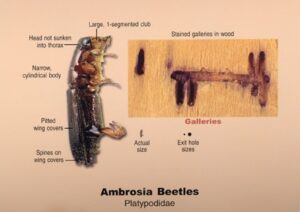
HABITAT/WOOD PREFERENCE
The beetles excavate tunnels in dead trees in which they cultivate fungal gardens, their sole source of nutrition.
BIOLOGY AND BEHAVIOR
Associated with a fungus that stains the excavated galleries. Can cause a fungal infection lethal to the tree.
DISTRIBUTION
Common and problematic in the mid-Atlantic and southern United States
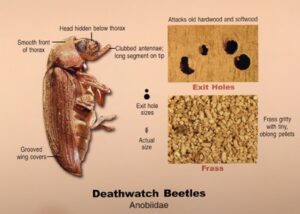
HABITAT/WOOD PREFERENCE
This beetle’s larva is very soft, yet it can bore its way through wood, through which it is able to digest using a number of enzymes in its alimentary canal provided that the wood has experienced prior fungal decay (old wood).
BIOLOGY AND BEHAVIOR
Adults of E. peltata emerge between June and August. Larvae take one to two years to develop.
DISTRIBUTION
Found throughout the eastern United States, especially in the southeastern states
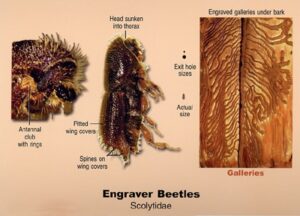
HABITAT/WOOD PREFERENCE
This beetle attacks small diameter ponderosa, Jeffrey and lodgepole pines throughout the trees range and may occasionally attack other pine species.
BIOLOGY AND BEHAVIOR
May infest live trees in sufficient numbers to kill them.
DISTRIBUTION
Southern United States
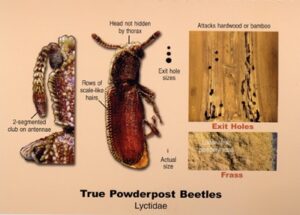
HABITAT/WOOD PREFERENCE
Powderpost beetles feed on deciduous trees, including certain hardwoods or softwoods depending on the species. Some hardwoods are naturally immune if they have low starch content or if their pore diameters are too small for the female beetle’s ovipositor to lay her eggs in.
BIOLOGY AND BEHAVIOR
Females lay eggs only in wood with available pores (finished wood surfaces are immune). Larvae take two to nine months to develop. Pupation lasts from twelve days to three weeks. Adults are attracted to light.
DISTRIBUTION
Common in the southeastern United States
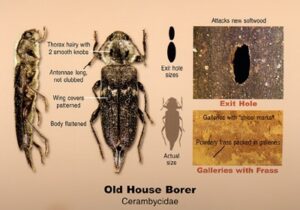
HABITAT/WOOD PREFERENCE
Old house borer is one of the only species of Cerambycidae that infests dead wood. This species prefers relatively new softwood timbers.
BIOLOGY AND BEHAVIOR
Adults of H. bajulus emerge between June and August. Larvae take two to ten years to develop.
DISTRIBUTION
Found coastally from Florida to Maine, and west to Michigan and Texas
